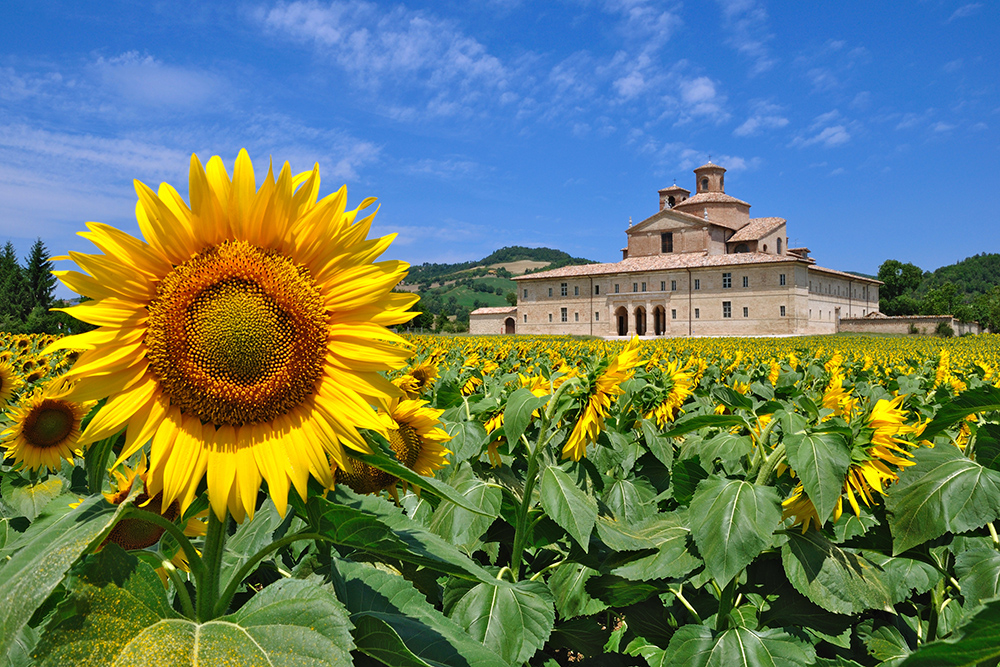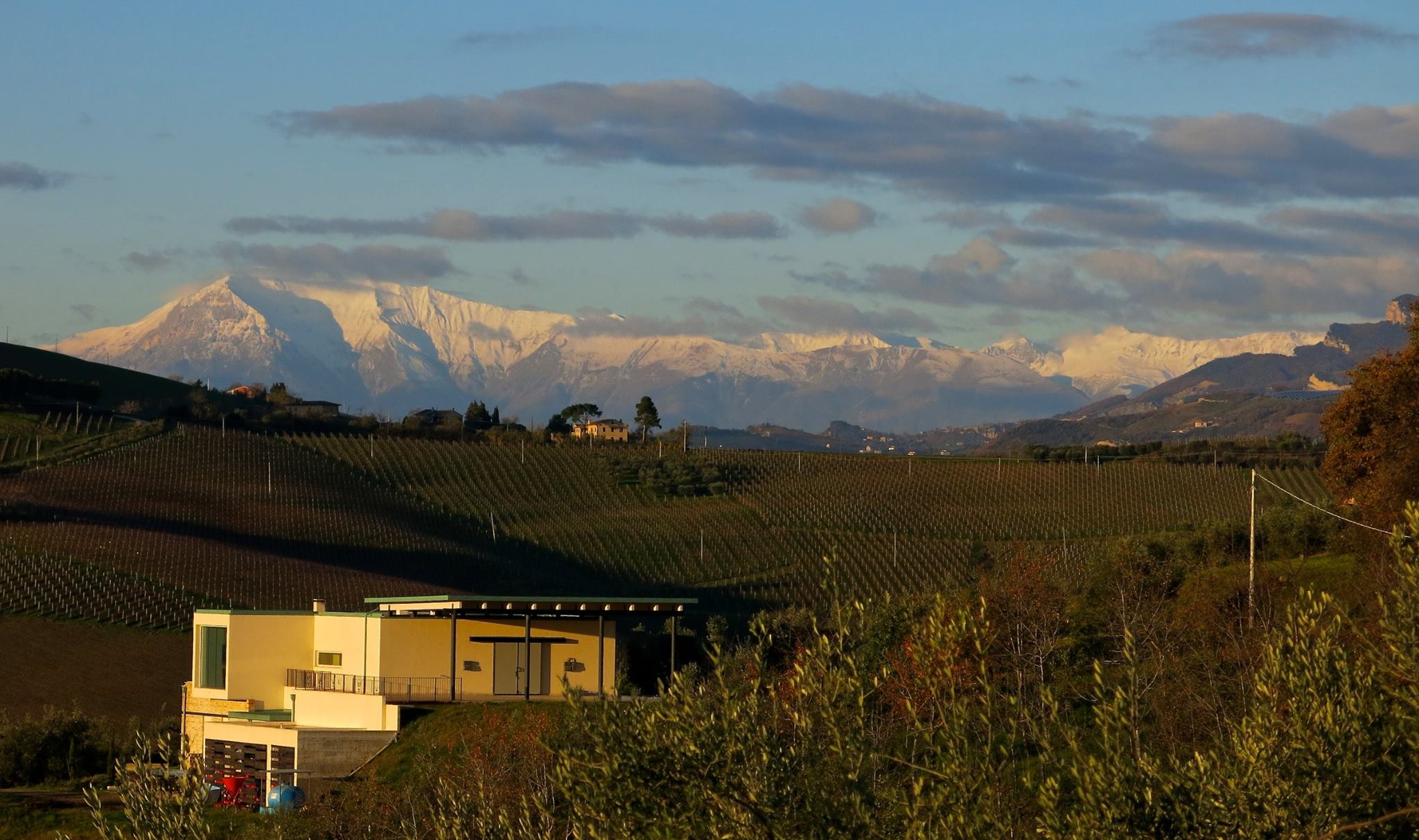By Nicki Bourlioufas


While Verdicchio is the most widely grown white grape in Italy’s Le Marche, it is little known outside the region, unless you happen to recall seeing a fish-shaped bottle in a liquor store, on the way out. Like the region itself, it’s underrated and little known outside the region’s borders.


Verdicchio is also known as Trebbiano di Soave and called such when grown in the north of Italy and it is much bolder and richer than Pinot Grigio, the more famous Italian wine grape. Yet for my money, Verdicchio can be more elegant; it’s more powerful, steely, acidic and often with mineral notes, which gives it complexity Pinot Grigio can often lack (but then again, that’s why many people like it, especially in the US). Definitely not as floral as many whites, it’s often combined with the more fragrant grape garganega to make the wine of Soave.


Bottled in Le Marche, Verdicchio is often sold in distinctine fish-shaped, or amphora, glass bottles. Lower yields in many small family owned vineyards in Le Marche give Verdicchio more power than many of the Soaves I’ve tasted. With distinct freshness, minerality length and character, verdicchio is a savoury wine. Sharp acidity helps aid mouthfeel and the wine sometimes carries apple or pear hints and bitter almond. Like a Riesling, it can carry great length and freshness and display the minerality that many of us like.
There are two Denominazione di Origine Controllata (DOC) appellations, Verdicchio dei Castelli di Jesi and Verdicchio di Matelica, along with DOCG Riserva status for wines aged eighteen months prior to release. The breezes off the Adriatic are fresh, rain is plentiful, and the vines experience a wide diurnal temperature range of warm sunny days followed by very cool nights. This enables the grape flavours to develop full flavour, acidity and elegance. Of course, you need to shop around the Italian wines to get a good example, and avoid some watery wines, but that’s true of wines the world over. Some are good, some aren’t, and price isn’t often a guide. (You’ll often find me comparing the wine industry to the cosmetics industry in terms of what is promised, and what is actually delivered).


Primo Estate returns to origins
Turning to a great example, and made by a local, it is Primo Estate’s 2018 Verdicchio. In order to commemorate Primo Estate’s 40th year of winemaking, Joe Grilli has returned to his parent’s Italian birthplace of Le Marche to create his version of the region’s famous white grape: Verdicchio.
Bitter almond, a hint of stone fruit and with a steely edge is how I’d describe the 2018 Primo Estate Verdicchio, from Castelli di Jesi, near Ancona on Italy Ardiatric coat (on the east). With a delightful golden colour, it looks good in a glass and tastes great in the mouth.
Winemaker Joe Grilli with Italian colleagues used the same winemaking techniques that make its famous La Biondina (the aptly named “Blonde” Colomard) in South Australia: long, slow, cold fermentation with its selected yeast strain which it took to Italy to make the wine, before bottling under screwcap.
The winery is famous for its other Italian-inspired wines. Current releases include the 2020 Pinot Grigio d’Elena ($35), from the cool McLaren Vale sub-region of Clarendon, which sits adjacent to the Adelaide Hills, and features apples and pear flavours savoury mineral notes on the palate, and Il Briccone, (the rascal) ($28). Also from Clarendon, it has full fruit flavours and spicy notes, helped by 15% Sangiovese. Unlike some of McLaren Vale reds, it’s not overpowered by oak, being matured for 12 months in used oak. Hot and dry conditions through Summer resulted in a short, condensed vintage characterised by excellent fruit quality and a reduced yield.
So where is Le Marche? What’s so special?
Much less famous than the adjacent region, Umbria, or the one next to that, Tuscany, though it perhaps more pretty than both, it boasts rolling hills, unending fields of sunflowers and fewer factories to pollute the air – which is important in Italy, because with its small space and big population, pollution is a problem, though COVID-19 has probably helped thin the crowds and the roads.


Le Marche takes in the majestic and undeveloped mountains Appenine mountains running through the centre of Italy. It is home to scenic rivers and lush green forests that add to the beauty of the region which takes in many mediaeval towns. There are lots of national parks, where you can hike or camp or simply absorb nature. And I stress again, it’s not as busy as more famous and populated parts of Italy.

Wine, good and fashion
So, if you can get to Le Marche to wine taste and tour, do it. It’s worth it. I’ve been several times and loved each time and want to go back one day, post COVID-19. The region is also famous for truffles and perhaps more importantly, for the production of designer leather goods. You can shop in many outlets such as Tod’s, Prada, Armani, Roberto Cavalli, La Perla, etc (as I admit I have), so you can combine fashion and wine and of course, my other great Italian favourite, gelato.
Get yourself into a one of the region’s many rustic medieval B&Bs, preferably away from the overpopulated coastline and murky Adriatic waters, into the far more peaceful inland regions, such as Matelica. And start wine tasting.
Virtually in the middle of nowhere, Matelica is very peaceful, with many wineries producing Verdicchio and wineries with cellar doors right in the town – and a Giorgio Armani outlet to shop for some well-priced clothes. Cantine Belisario features many local wines and you won’t need a car if you’re staying in town. And of course, you can buy the Verdicchio in the fish-shaped bottle for just €5, but get quality at the same time. Until you’ve been to wineries like this one, you can’t possibly appreciate the quality and value of some Italian wines.


